Autoflower cannabis plants nutrient feeding schedule

The quality-focussed grower can have many questions about getting the best results from their autoflower seeds. What’s the best autoflower feeding schedule? Are the best nutrients for autoflowers the same as those for photoperiod strains? How much will potency increase if plants are maintained in the nutrient ‘sweet spot’ (without over/under feeding)? Autoflower feeding schedules are not always discussed in as much detail as many growers would like. If you grow autoflower seeds and want to optimise your results then this review of autoflower nutrient schedules is essential reading.
What are the best suited types of nutrients for autoflowers and why?
Autoflower seeds grow quite differently to traditional photo-dependent feminised cannabis seeds. Autoflower seeds can thrive under 20 hours of daily light from seed to harvest, without any requirement to reduce daily light hours to 12. To many growers, autos can seem like a completely different beast to photoperiod strains. Yet the biochemical processes used to produce the buds, resin, leaves, terpenes and cannabinoids are the same in both autos and photoperiods. It’s just the cannabis genetics (which affect the photoperiod dependency) which have changed. That means the same raw materials, fuel and nutrients are needed to power the biochemical pathways. You can therefore get great results growing autoflower strains using the same nutrients that you would use for your photoperiods.

Related:
Best cannabis nutrients and feeding schedule
How to plan a feeding schedule for your autoflowers
Whether you’re growing from autoflower seeds or photoperiod feminised cannabis seeds the principles remain the same. The plant roots need to be provided with an aerated grow medium that can provide all the necessary minerals and nutrients to support growth.
Probably the main error from autoflower growers, especially the less experienced ones, is to over water and over-feed their plants. The logic is perhaps understandable enough – more nutrients should produce larger plants. However, in reality, over-feeding tends to stress your plants. This damages the roots, stunting growth and is known as autoflower nutrient burn. In the worst cases, over-feeding can permanently stunt growth. Therefore, keeping your autos in the nutrient sweet-spot from autoflower seed to harvest is always the preferred target.
Whether you’re growing your auto in soil, coco or hydroponics doesn’t matter. The principles and fundamentals remain the same. Just like photoperiod plants, autos have low initial nutrient requirements which increase steadily as the plant grows. Again, as with photoperiod plants, Nitrogen rich nutrients are required initially to allow the auto to grow healthily in the vegetative growth phase.


As the autoflower ages it starts to approach bloom. The precise timing of bloom depends on the strain and phenotype. An autoflower often starts to show first signs of bloom around weeks 4-6 after germination but this can vary from strain to strain and will also vary according to the specific grow conditions. It’s often around this time that growers switch to autoflower bloom nutrients.
The precise timing of the switch from veg to bloom nutrients doesn’t seem to be absolutely critical. Some growers switch directly from veg nutrients to bloom at the first sign of female preflowers, others will wait a week. Some growers will blend the veg and bloom nutrients over a week or so to allow a gradual transition. All these approaches give reasonable results. During this early bloom period the auto will start to require a greater proportion of Phosphorus rich nutrients and will be less dependent on the Nitrogen-rich veg nutrients.
Related:
Top 5 cannabis seed flowering stage mistakes
When to start feeding your autoflower plant?
‘When to start nutrients for autoflowers?’ is a common question. Much depends on the type of grow method you have chosen. An autoflower DWC feeding schedule will need to contain all the nutrients. Specially diluted starter nutrients can be used in DWC which won’t ‘burn’ or overload the delicate young roots of small seedlings.
One key difference between soil and DWC (deep water culture, a form of hydroponics) growing is that a DWC-grown plant is totally dependent on the grower for all nutrients from the point of germination.
Autoflower nutrition for soil growers has some differences compared to cannabis hydroponics. Good quality soil is packed with nutrients and minerals. If you grow in a large container of soil, perhaps augmented with slow release organic nutrients (such as those from BioTabs) then you may not need to worry about feeding your auto with anything other than water. Growing doesn’t get much simpler than that!
If you’re feeling concerned or anxious about autoflower feeding schedules then it could be worth considering growing with large volumes of soil in airpots/sacks with slow release organic nutrients.

Best nutrient regime for autoflowers depends on the grow method
The massive number of variations in the way people grow and the types of grow method means that it’s difficult to give a specific feeding schedule that works all the time in every situation. Many expert soil growers know that certain soils are more complete in nutrients than others, each soil will have slightly different nutrient ratios as well as different quantities of them. Different strains will grow at different rates, creating different nutrient demands at each stage of growth. A universal autoflower feeding schedule that works for all strains in all conditions simply doesn’t exist. The grower will instead need to use their judgement to know when to feed.
Less experienced growers will need to follow guidelines and err on the side of under-feeding their plants rather than over-feeding. A hydroponic autoflower cannabis grower will be looking to start their nutrient feeding schedule for autoflowers within a few days of the seeds germinating. Someone growing an autoflower in a 75+ litre sack of quality soil with slow release organics may never need to consider ‘feeding’ with anything other than water.
This is just the same as it would be for someone growing photoperiod feminised cannabis seeds – the same principles apply when it comes to cannabis nutrients.
Nutrients for autoflowers in seedling stage
Requirements for nutrients during the cannabis seedling stage are at their lowest. The presence of too many nutrients can cause autoflower nutrient burn. Autoflowers have a fixed life cycle, usually around 75 days. Anything that causes stress, such as nutrient burn, will slow down autoflower development. This will have knock-on effects for the eventual yield and THC level as well as potentially compromising the terpene profile
Related:
Cannabis seedling stage how-to-guide
Nutrients for autoflowers in vegetative stage
During the vegetative stage, autoflowers will increase their demand for minerals and nutrients. Nitrogen rich nutrients are particularly useful as the plant aims to grow roots, branches and leaves. The changes in nutrient requirements affect much more than just the macro nutrients (Nitrogen, Potassium, Phosphorus), lots of micro nutrients and trace minerals are also required. The following review explains all this in much more detail.
Related:
Cannabis vegetative stage how-to-guide
Nutrients for autoflowers in flowering stage
As the autoflower starts to bloom the demand for other nutrients such as Phosphorus and Potassium increases. This is due to the plant switching from veg to flowering. Roots continue to grow, as do the branches. But much of the plants energy and biochemistry is now focussed on development and growth of the flowers. Ultimately, the plant goal is to be pollinated and produce seeds. However the home grower avoids pollination at all costs, preferring to grow ‘sinsemilla’ – unseeded cannabis with maximum potency
Related:
Cannabis flowering stage how-to-guide
Autoflower overfeeding symptoms and cure
Look for exactly the same overfeeding symptoms that you would expect to see in a photoperiod strain. Brown leaf tips on autoflowers are a sign of over feeding. Subsequent growth slows, or even stops completely in the worst cases as the roots and cells are overloaded with minerals and nutrients at concentrations that are damaging rather than nourishing.
Flushing the plants with water is the best approach if you grow in soil or coco fibre. If you grow with hydroponics, replacing the nutrient reservoir with water is the best option. Eventually the plant can be re-introduced to nutrients but caution is advised. It should also be noted that autoflowers have limited time for recovery. Overfeeding autoflowers can significantly reduce their potential, yet it remains one of the most common errors. Especially by less experienced growers.
Remember, modern autoflower seeds are just as good as the best feminised seeds. Proven strains such as Auto Cinderella Jack can produce buds with over 25% THC (grown in soil with BioTabs), many photoperiod strains can’t manage such high-end potency levels.
Related:
With over 25% THC is Auto Cinderella Jack the world’s strongest autoflower?

Autoflower underfeeding symptoms and cure
Under-fed autoflowers may have pale looking leaves alongside weak growth. In bloom, an under-fed auto will have low levels of flower production with little or no resin. The cure is simple enough, gradually (rather than suddenly) increasing the nutrient concentration.
Avoid the temptation to over-feed which would only compound the error. It’s unlikely that the under-fed autoflower will ever fully recover its lost potential but at least you will improve the situation.
If you can avoid under-feeding and over-feeding your autoflowers you can produce genuine Grade-A buds. Dutch Passion’s Auto Skywalker Haze recently recorded over 26% THC in an independent lab test. Fans of soil should note that the 26% THC levels were found in a plant that was simply grown in soil/coco fibre with Biotabs. Simple grow methods can produce the highest THC levels!
Related:
Auto Skywalker Haze, the 26% THC autoflower!
Flushing autoflowers and when to stop feeding
Flushing of autoflowers remains a contentious topic to some. Many growers like to flush their plants, or feed them with plain water, for the last 10 days or so. Proponents of flushing feel it helps the plant produce a smoother, cleaner vape/smoke by allowing the plant to flush itself of any unwanted excess minerals. But as with most things related to cannabis, there are contrasting view points. Some growers refuse to flush their plants feeling that there is only limited science behind the concept of flushing. These growers will continue feeding their plants right until the end. The logic is that the plant shouldn’t be deprived of key nutrients while they are at their most productive.
Typical autoflower nutrient feeding schedule
Creating a generic autoflower feeding schedule that works for all growers, for all strains in all conditions and grow systems simply isn’t that easy. A grower with a large container of high quality soil and slow release organic nutrients may only ever need to add water during the grow. A cannabis hydroponic grower is fully responsible for all plant nutrition from seedling through to harvest and may use quite a substantial assortment of nutrients and additives.
To further complicate the subject of the optimised autoflower nutrients feeding schedule, not all nutrients have the same base concentration. In recent years some new nutrient suppliers have tried to gain market share by selling nutrients that are twice as strong (and therefore claimed to be better value) than traditional nutrients. Such nutrients have caught out even expert growers who incorrectly read the nutrient instructions.
One approach is for growers to be guided by (rather than to strictly obey) recommendations from the nutrient providers. Recommended nutrient levels from the nutrient supplier are generalised approximations and do require a level of understanding/interpretation from the grower. If the plants look like they are being over-fed there is no point continuing to increase nutrient concentrations simply because the autoflower feeding chart says so.
Grower skill and experience is always useful. The experienced grower will feel confident to give the plants the nutrition they require even if it means departing from the manufacturers recommendations.
What do nutrient suppliers say about autoflower nutrient feeding schedules?
The Advanced Nutrients soil feeding schedule for autoflowers is a good starting point for some soil growers. But remember that a complicated nutrient regime may not be necessary if growing in large containers of good quality soil. You may not even need any additional nutrients at all with sufficient good quality soil and slow release organic nutrients! It’s worth noting that cannabis has grown successfully in the wild for thousands of years without the need for specialist nutrient supplements.
If you’re growing in coco fibre then the Canna coco autoflower feeding schedule is a good start. Remember the manufacturers guidelines are just a guideline rather than a firm rule. You may also need to control other factors such as pH. You may also need to double-check your nutrient concentrations with an EC meter which measures electrical conductivity (a rough guide of nutrient concentrations). EC meters as well as pH meters will need regularly calibrating to avoid erroneous readouts which could/will lead to subsequent disaster.

The General Hydroponics autoflower feeding schedule and the Biobizz autoflower feeding schedule may also be useful starting points. But again growers are advised to follow the plant nutrient requirements rather than blindly following the manufacturers guidelines. Each plant is an individual growing in specific environmental conditions with different genetics. It’s simply unrealistic and unfair to expert nutrient suppliers to give universal autoflower nutrient schedules that will work for everyone all the time.
Less experienced growers are advised to keep autoflower nutrient schedules as simple as possible. It’s easy for the less experienced grower to feel overwhelmed by the complexity of the full range of nutrients offered by some of the leading suppliers. Keeping things as simple as possible, especially to begin with, is always good advice. It means that there is less to go wrong, allowing the grower to build confidence and experience.
Autoflower nutrients, keep it simple until your experience grows
A few searches of grow forums and the websites of nutrient suppliers will show you some suggested feed schedules and some online calculators which will make tailored recommendations for you. Some growers have published their own autoflower feeding/nutrients schedules online. With so many of the autoflower nutrient guides being quite different, no-one has created a one-size-fits-all autoflower nutrient guide. But with so many different types of grow conditions, cannabis strains, grow methods and systems it’s perhaps unrealistic to expect one.
Following nutrient manufacturers guidelines isn’t that easy for those that lack the experience and confidence when it comes to an autoflower nutrient guide. Likewise, adapting an autoflower nutrient feed schedule to allow for variations in growing conditions, light intensities, container sizes and genetic variations may not feel easy.
For those newer growers that feel less knowledgeable than they would like, there is a much easier approach. As previously mentioned, growing organically in soil with slow release nutrients takes much of the guesswork out of autoflower feeding schedules. A large volume of nutritious soil contains a sizeable buffer of moisture, minerals and nutrients. The grower won’t have to worry too much about watering every day (especially when using 50-75+ litre sacks of quality moist soil), nor will they need to worry too much about adding extra nutrients either thanks to the large food reserves present in the soil.
Use slow release BioTabs organic nutrients and you may not even need to add anything other than water during the grow. The only nutrient requirement may be a small top-dressing of general purpose bloom nutrient in the last few weeks. On the other hand, an expert grower may enthusiastically embrace the full range of nutrients from their supplier and pride themselves on their pinpoint control over all aspects of their autoflower feeding schedule.
Related:
How to water your cannabis plants
Is the optimised autoflower feeding schedule best kept simple?
Whatever your skill level, try to avoid over-complicating your autoflower nutrient schedule. Master the basics before delving into the finer details. Don’t write off the idea of growing with large containers of soil and slow release organic nutrients – plenty of expert growers do just that and get superb quality harvests with the minimum of nutrient complications. Growing doesn’t have to be high-tech and complicated to produce high THC results!













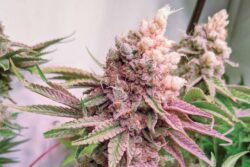

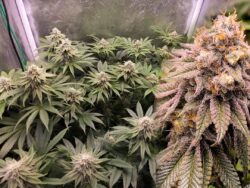
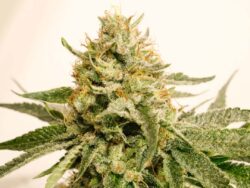
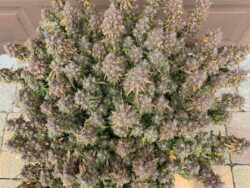
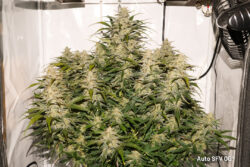

2 Comments. Leave new
Flora Trio,Cal mag ,tps Root and some Fish Shit works awesome for autos
Unrealistic to provide a guide for ALL grow mediums? But they have for photoperiods? Why not convert this into autos? 🤯. I’m left to rely on extreme amateurs in grow diaries.